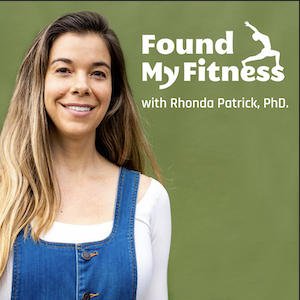Is the relationship between exercise and telomere length dose-dependent? | Elissa Epel
Get the full length version of this episode as a podcast.
This episode will make a great companion for a long drive.
The Omega-3 Supplementation Guide
A blueprint for choosing the right fish oil supplement — filled with specific recommendations, guidelines for interpreting testing data, and dosage protocols.
Small, moderate healthy behaviors can add up to reduce inflammation, increase longevity, and lengthen our cells' telomeres – factors that are critical to healthy aging. One healthy behavior is exercise, especially endurance exercise, such as running, swimming, cycling, or even vigorous walking. In this clip, Dr. Elissa Epel describes how the beneficial effects of exercise on telomere length are dose-dependent, but in a non-linear fashion. In other words, the extreme athlete won't necessarily see greater benefits in terms of telomere length than the average person who consistently engages in physical activity.
Rhonda: Is there research that indicates that there is a dose-dependent effect on exercise intensity and telomere length, though?
Elissa: Yes, there is. But it's not linear. So when you get up to extreme sports and marathon runners, yeah, they're a little bit longer in their telomeres but not much longer than someone who's like running three times a week. So we don't think...you know, these extreme things they also have some costs and we don't think that they're necessary in terms of some of the aging biomarkers that we've been studying.
A measurable substance in an organism that is indicative of some phenomenon such as disease, infection, or environmental exposure.
Important for the endocrine enhancing properties of exercise. Exerkines are exercise-induced hormonal-like factors which mediate the systemic benefits of exercise through autocrine, paracrine, and/or endocrine properties.[1]
- ^ Helge, Jørn Wulff; Moritz, Thomas; Morville, Thomas; Clemmensen, Christoffer; Dela, Flemming (2020). Plasma Metabolome Profiling Of Resistance Exercise And Endurance Exercise In Humans Cell Reports 33, 13.
A critical element of the body’s immune response. Inflammation occurs when the body is exposed to harmful stimuli, such as pathogens, damaged cells, or irritants. It is a protective response that involves immune cells, cell-signaling proteins, and pro-inflammatory factors. Acute inflammation occurs after minor injuries or infections and is characterized by local redness, swelling, or fever. Chronic inflammation occurs on the cellular level in response to toxins or other stressors and is often “invisible.” It plays a key role in the development of many chronic diseases, including cancer, cardiovascular disease, and diabetes.
Distinctive structures comprised of short, repetitive sequences of DNA located on the ends of chromosomes. Telomeres form a protective “cap” – a sort of disposable buffer that gradually shortens with age – that prevents chromosomes from losing genes or sticking to other chromosomes during cell division. When the telomeres on a cell’s chromosomes get too short, the chromosome reaches a “critical length,” and the cell stops dividing (senescence) or dies (apoptosis). Telomeres are replenished by the enzyme telomerase, a reverse transcriptase.
Member only extras:
Learn more about the advantages of a premium membership by clicking below.
Get email updates with the latest curated healthspan research
Support our work

Every other week premium members receive a special edition newsletter that summarizes all of the latest healthspan research.
Telomeres News
- Hyperbaric oxygen therapy reverses aspects of the cellular aging process in older adults, boosting immune cell function.
- Hyperbaric oxygen trial discovered a lengthening of up to 38% of the telomeres, decrease of up to 37% in senescent cells in certain cell populations
- Removing senescent cardiac muscle cells from the hearts of aged mice, both genetically and using drugs, reduces hypertrophy and fibrosis in aged heart
- Aerobic exercise (120 minutes per week) significantly lengthened telomeres, a biomarker for healthy aging, in white blood cells after 24 weeks.
- Coal plant emissions may be damaging infant DNA. Babies born during a coal plant’s operation in China had shorter telomeres.




















